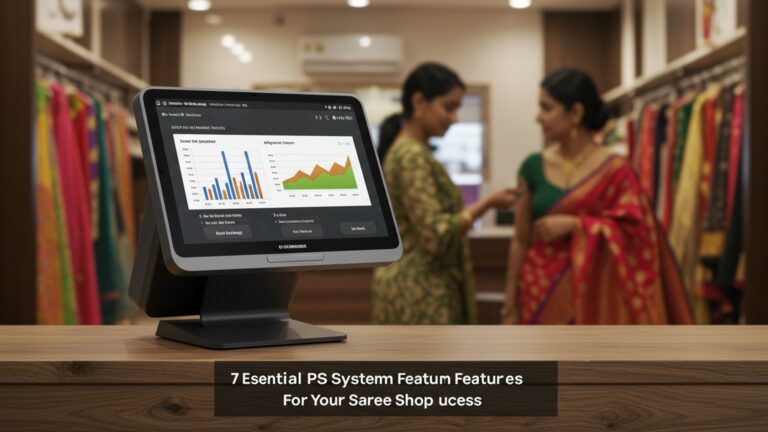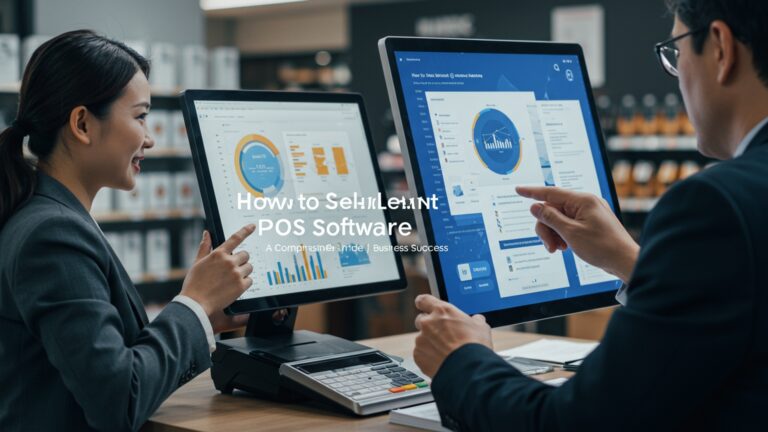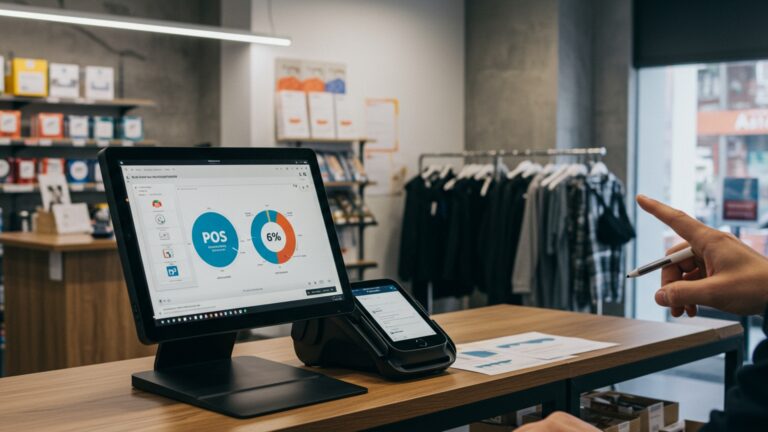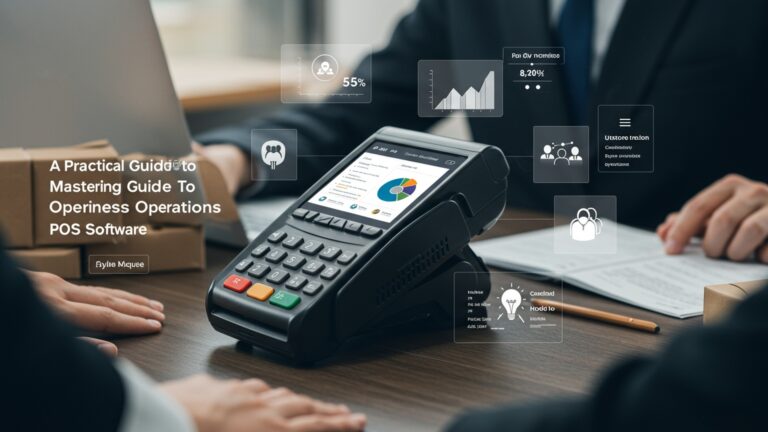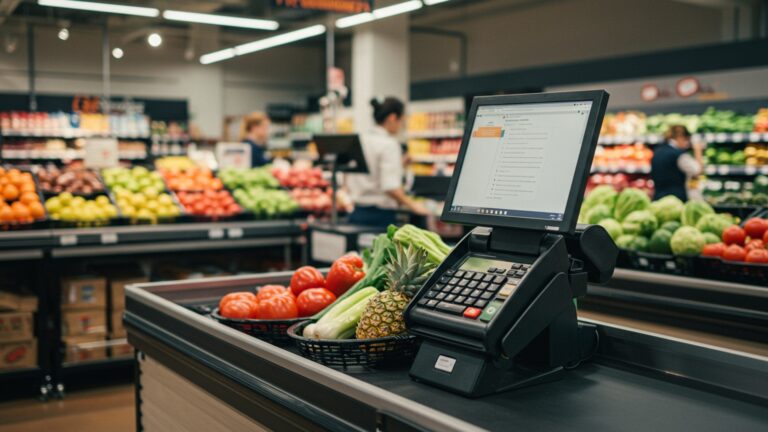Your Ultimate Guide How to Select the Right POS Software for Small Businesses
- POS software
- POS software

Understanding POS Software: Beyond the Transaction
In today’s competitive business landscape, a Point of Sale (POS) system is far more than just a cash register. For small businesses, selecting the right POS software can be a transformative decision, impacting everything from customer satisfaction to inventory accuracy and overall profitability. At its core, POS software is the central nervous system of your retail or service operation, processing transactions, managing inventory, tracking sales data. often much more.
A modern POS system typically comprises two main components: hardware and software. The hardware includes items like a tablet or computer, barcode scanner, receipt printer. cash drawer. But, it’s the sophisticated POS software that truly unlocks the system’s potential, acting as the brain that coordinates all these functions. It’s the critical tool that empowers small businesses to operate efficiently, grasp their sales patterns. enhance customer experiences.
For example, imagine a small coffee shop. Without robust POS software, managing orders, tracking ingredient usage (like milk and coffee beans), processing various payment types. understanding peak hours would be a chaotic, manual nightmare. With the right solution, the baristas can swiftly take orders, payments are processed seamlessly, inventory levels are automatically adjusted. the owner gains valuable insights into their best-selling items and busiest times, all from one integrated system.
Assessing Your Business Needs: A Strategic Approach
Before diving into features and pricing, the most crucial first step is a thorough assessment of your specific business requirements. Every small business is unique. what works for a bustling retail boutique might not be suitable for a quiet service-based business. This foundational analysis will guide your entire selection process for new POS software.
- Industry-Specific Requirements
- Retail
- Restaurants/Cafes
- Service Businesses (Salons, Spas)
- Transaction Volume and Complexity
- Inventory Management Needs
- Customer Relationship Management (CRM) Capabilities
- Reporting and Analytics
- Integration with Existing Systems
- Budget Considerations
Do you need robust inventory management, variant tracking (size, color), customer loyalty programs. integration with e-commerce platforms?
Are table management, kitchen display systems (KDS), online ordering integration, tipping features. ingredient tracking essential?
Do you require appointment scheduling, staff management with commission tracking. client history notes?
A business with high transaction volume needs speedy processing and reliability. Consider if you handle complex transactions like split payments, returns, exchanges, or gift cards frequently.
Do you manage a vast catalog of products, require multi-location inventory sync, or need advanced features like vendor management and purchase order generation?
Is building customer loyalty vital? Look for features that allow you to capture customer data, track purchase history. implement loyalty programs directly through your POS software.
What kind of insights do you need to make informed decisions? Sales trends, employee performance, inventory turnover. profit margins are common needs.
Will your new POS software need to seamlessly integrate with your accounting software (e. g. , QuickBooks, Xero), e-commerce platform (e. g. , Shopify, WooCommerce), or other business tools? This is often a non-negotiable for streamlining operations.
Be realistic about what you can afford, considering both upfront costs (hardware, setup) and recurring expenses (monthly subscriptions, transaction fees, support).
Core Features to Look For in POS Software
Once you comprehend your needs, you can evaluate POS software solutions based on critical features. Prioritizing these will ensure the chosen system truly supports your business operations.
- Sales & Transaction Processing
- Speed and Ease of Use
- Payment Flexibility
- Customization
- Inventory Management
- Real-time Tracking
- Product Variants
- Barcode Scanning
- Low Stock Alerts & Reordering
- Multi-Location Support
- Customer Management (CRM)
- Customer Profiles
- Loyalty Programs
- Marketing Tools
- Employee Management
- Time Clock & Scheduling
- User Permissions
- Performance Tracking
- Reporting & Analytics
- Comprehensive Sales Reports
- Inventory Reports
- Employee Performance Reports
- Customer Insights
- Integrations
- Accounting Software
- E-commerce Platforms
- Other APIs
- Security
- PCI Compliance
- Data Encryption
- User Access Controls
- Hardware Compatibility
The interface should be intuitive, allowing staff to process sales quickly and accurately, especially during peak hours.
Support for various payment types, including credit/debit cards (chip, swipe, tap), mobile payments (Apple Pay, Google Pay), gift cards. even alternative payment methods. Ensure PCI compliance for security.
Ability to apply discounts, process returns/exchanges. manage layaways or store credit.
Automatic updates of stock levels as items are sold or received.
Ability to manage different sizes, colors, or styles of the same product.
Efficient product lookup and checkout.
Automated notifications and tools to generate purchase orders when stock runs low.
Essential for businesses with more than one physical store.
Capture contact insights, purchase history. preferences.
Built-in features for points, rewards, or discount programs to encourage repeat business.
Integration with email marketing platforms or built-in tools for customer communication.
Track employee hours and manage shifts.
Assign different access levels to protect sensitive data and prevent errors.
Monitor individual sales, tips. productivity.
grasp daily, weekly. monthly sales trends, top-selling products. peak hours.
Track stock movement, dead stock. inventory valuation.
Evaluate individual and team productivity.
Identify your most loyal customers and popular products.
Seamless data flow to platforms like QuickBooks or Xero reduces manual data entry and errors.
Sync inventory and sales data between your physical store and online shop.
The ability to connect with other specialized tools via APIs can be a huge advantage. For instance, a florist might integrate with a delivery tracking API.
Essential for processing credit card payments securely.
Protect sensitive customer and business data.
Granular permissions to limit staff access to specific functions.
Ensure the POS software is compatible with or offers affordable bundles for necessary hardware like barcode scanners, receipt printers, cash drawers. card readers.
Cloud-Based vs. On-Premise POS Software: A Critical Comparison
One of the most significant decisions when choosing POS software is whether to opt for a cloud-based (SaaS – Software as a Service) or an on-premise solution. Each has distinct advantages and disadvantages that can impact your operations, cost. flexibility.
| Feature | Cloud-Based POS Software | On-Premise POS Software |
|---|---|---|
| Deployment | Software hosted on the vendor’s servers, accessed via web browser or app. | Software installed directly on your local computers/servers. |
| Cost Structure | Typically subscription-based (monthly/annually), lower upfront hardware costs, included updates/support. | Higher upfront cost (software license, server hardware), potential for additional fees for updates and support. |
| Accessibility | Access data from anywhere, on any device with an internet connection. Ideal for multi-location businesses or remote management. | Data primarily accessible on-site; remote access often requires complex setup (VPN). |
| Maintenance & Updates | Managed by the vendor; automatic updates, security patches, backups. Minimal IT involvement required. | Managed by the business; requires dedicated IT staff or contractors for updates, maintenance. backups. |
| Security | Vendor responsible for server security, data encryption. disaster recovery. Relies on strong internet security. | Business is fully responsible for all security measures, backups. data protection. |
| Scalability | Easily scales up or down with your business needs (add/remove users, locations) with a subscription adjustment. | Scaling often requires additional hardware and software licenses, which can be costly and time-consuming. |
| Offline Capability | Some offer limited offline mode, syncing data when connectivity returns. Reliant on internet for full functionality. | Fully functional without internet connection, as data is local. |
| Customization | Generally less customizable out-of-the-box. often offers extensive integrations. | Can be highly customized to specific business needs. requires specialized development. |
For most small businesses today, cloud-based POS software offers compelling advantages in terms of cost-efficiency, ease of use, accessibility. scalability. It liberates you from significant IT overhead, allowing you to focus on your core business. On-premise solutions are typically favored by larger enterprises with specific security compliance needs or highly customized workflows that necessitate direct control over their servers.
Evaluating POS Software Providers: Beyond the Features List
Choosing the right POS software isn’t just about the features; it’s also about the provider behind the solution. A strong vendor relationship and reliable support are crucial for long-term success.
- Reputation and Support
- Customer Service
- Uptime Guarantees
- Training
- Scalability
- Customization
- Pricing Models
- Subscription Fees
- Transaction Fees
- Hardware Costs
- Setup & Installation
- Add-ons
- Trial Periods and Demos
What kind of support do they offer (24/7, email, phone, chat)? Is it responsive and knowledgeable? Read online reviews and testimonials.
For cloud-based systems, inquire about their uptime record and disaster recovery protocols.
Do they provide comprehensive training materials or onboarding assistance for you and your staff?
Can the POS software grow with your business? If you plan to open more locations, add online sales, or expand your product lines, ensure the system can handle future demands without requiring a complete overhaul.
While cloud-based solutions are generally less customized than on-premise, many offer significant flexibility through integrations, customizable reports. adjustable workflows. Does it allow for configuration to your unique business processes?
interpret the full cost. This includes:
Monthly or annual cost for the software.
Percentage or flat fee per transaction, especially if the POS software is bundled with payment processing.
Upfront expense for required POS hardware.
Any one-time fees for initial setup or data migration.
Costs for additional modules or advanced features.
Always ask for a transparent breakdown of all potential costs to calculate the total cost of ownership (TCO).
Never commit to a POS software without experiencing it firsthand. Take advantage of free trials or schedule a personalized demo. This allows you to test key functions with your own products and staff, identifying potential bottlenecks or usability issues before making a significant investment.
Real-World Application: Case Studies and Actionable Advice
Let’s look at how the right POS software can make a tangible difference for small businesses.
Case Study 1: “The Savvy Boutique” – Revolutionizing Retail with Cloud POS
Sarah owned a small fashion boutique, “The Savvy Boutique.” She was struggling with manual inventory tracking, leading to stockouts of popular items and overstock of slow movers. Her old cash register provided no insights beyond total sales. After researching various POS software options, she chose a cloud-based solution known for its robust inventory management and e-commerce integration. The transition was smooth. Her staff quickly learned the intuitive tablet-based interface. Now, when a customer purchases a dress, the inventory automatically updates. she receives alerts when sizes run low. The system also tracks customer preferences, allowing her to send targeted promotions. Within six months, her inventory turnover improved by 20%. her online sales, seamlessly integrated with her physical store’s stock, saw a 30% boost. The detailed sales reports helped her identify trends and make smarter buying decisions, directly impacting her bottom line.
Case Study 2: “Brew & Bite” – Streamlining a Busy Café
Mark’s café, “Brew & Bite,” was a local favorite. long lines during morning rushes were a problem. His old system was slow. staff had difficulty handling complex orders and split payments. Mark invested in a POS software solution specifically designed for restaurants, featuring a fast, touch-screen interface, kitchen display system (KDS). integrated online ordering. The KDS dramatically improved order accuracy and kitchen efficiency. Customers could now order and pay ahead via a mobile app, significantly reducing wait times. The POS software also managed staff shifts and tips, simplifying payroll. Mark could easily access reports on popular menu items, enabling him to optimize his offerings and reduce food waste. His customer satisfaction ratings soared. the operational efficiency allowed him to serve more customers without compromising quality.
- Define Your Needs Clearly
- Prioritize Features
- Test Thoroughly
- Consider the Total Cost of Ownership (TCO)
- Don’t Underestimate Support
Spend time outlining your specific requirements, pain points. desired outcomes. Don’t choose a POS software based on a generic feature list.
Distinguish between ‘must-have’ and ‘nice-to-have’ features. Focus on solutions that excel in your core operational needs.
Utilize free trials and demos. Get your staff involved in testing. If possible, run a pilot program with real transactions. This hands-on experience is invaluable.
Look beyond the sticker price. Factor in all recurring fees, hardware, potential setup costs. long-term support expenses. A seemingly cheaper solution upfront can become very expensive over time if it lacks essential features or has hidden fees.
A robust POS software is only as good as the support system behind it. When things go wrong (and they sometimes will), quick and effective support is paramount to minimize downtime and prevent lost sales.
Conclusion
Choosing the right POS software for your small business is more than just a purchase; it’s a strategic investment in your operational efficiency and future growth. Remember, the true power lies not just in processing transactions. in how seamlessly it integrates inventory management, customer relationship tools. insightful analytics. My personal tip is to always prioritize scalability; I’ve seen countless small businesses outgrow their initial systems within a year, leading to costly transitions. Look for solutions that support current trends like mobile POS capabilities for flexibility. consider cloud-based options for their accessibility and automatic updates. For instance, exploring robust billing solutions can significantly simplify your daily operations. Don’t shy away from utilizing free trials or requesting personalized demos. This hands-on experience is invaluable for understanding how a system truly fits your unique workflow. Ultimately, the best POS software will empower you to make data-driven decisions, enhance customer experience. reclaim precious time. Embrace this selection process as an opportunity to transform your business, setting a strong foundation for sustained success in today’s dynamic market.
More Articles
Why Cloud Based POS Software is Your Business Future Learn How to Adopt It
Master Mobile POS Software Essential Guide for On-the-Go Business Operations
How to Choose the Best Billing and POS Software for Your Business Needs
Enhance Your Retail Store How to Implement POS Software Effectively
Find the Best POS Software in India A Comprehensive Buying Guide
FAQs
Why does my small business even need a fancy POS system?
It’s more than just ringing up sales! A good POS helps you track inventory, interpret what customers are buying, manage employees. even streamline accounting. It can save you tons of time and help you make smarter decisions, not just process payments.
What’s the absolute most critical feature I should look for?
While many features are vital, ease of use is paramount. If you and your staff can’t quickly and intuitively use it, all the fancy features in the world won’t help. Look for a clean interface, simple workflows. a system that won’t require a master’s degree to operate.
I’m on a tight budget. Are there affordable POS options that are still good?
Absolutely! Many providers offer tiered pricing, with basic plans perfect for small businesses. Some even have free versions with limited features that might get you started. Focus on what you truly need first, then explore options that fit your budget without compromising essential functions like reliable payment processing.
My business is pretty unique – like a custom craft store. Can a generic POS handle that?
Not all ‘generic’ POS systems are truly generic. Many are highly customizable or offer specific versions tailored for retail, restaurants, services, etc. Look for one that can adapt to your specific product catalog, inventory needs (e. g. , custom SKUs, variations). unique checkout flow. Don’t settle for a one-size-fits-all if it doesn’t really fit you.
How essential is customer support when picking a POS?
Super crucial! Imagine your system crashes during a busy rush or you have a weird transaction issue. You’ll want quick, reliable support to get you back on track. Check what kind of support they offer (phone, chat, email), their hours. read reviews about their responsiveness. Good support can be a real lifesaver.
Do I need special hardware to run POS software?
It depends on the system. Some modern, cloud-based POS solutions can run on existing tablets or smartphones, making hardware costs minimal. Others might require specific terminals, barcode scanners, or receipt printers. Factor hardware compatibility and cost into your decision, especially if you’re starting from scratch.
What if my business grows or my needs change down the road? Can I upgrade or switch easily?
This is a great question for future-proofing! Look for systems that offer scalability – meaning they have different plans or modules you can add as your business expands. Also, consider data portability. If you ever need to switch, you’ll want to be able to export your customer and sales data easily. Avoid systems that lock you in with proprietary formats.

